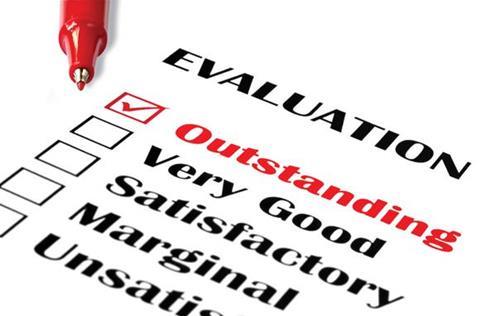Rating agencies are back in the spotlight, but what do the different systems mean and should you beware of companies that don’t use them?

Q: Rating agencies issue a variety of rating types, such as financial strength, issuer credit and others. Which should I watch?
A: The financial strength rating is the rating agency’s opinion of an insurer’s ability and willingness to pay claims, and is the one brokers and clients pay most attention to. However, credit ratings and financial strength ratings are typically closely linked – if a company looks likely to default on its bond payments, for example, a rating agency is unlikely to give it a high financial strength rating.
You will often find that the parent entity of an insurance group is assigned an issuer credit rating but not a financial strength rating. It is usually the operating subsidiaries that are assigned the financial strength ratings.
Q: How do the ratings scales used by the four main agencies differ?
A: Standard & Poor’s (S&P) and Fitch use similar rating scales. The highest rating is AAA, followed by AA+, AA and AA-, then down to A+. Moody’s has the same number of rating sub-divisions, but labels them differently, using numbers instead of pluses and minuses. On the Moody’s scale the highest rating is Aaa, followed by Aa1, Aa2, Aa3, down to A1. So an Aa1 from Moody’s is the same as AA+ from S&P and Fitch, and an A1 is an A+.
AM Best is different in that it uses fewer rating sub-divisions. In its A-range, for example, it only has A++ (the highest available) A+, A and A-.
Q: Insurance financial strength ratings look and behave like credit ratings. Are they used in the same way?
A: No. For investors, the critical cut-off point is investment grade status – that is BBB- and above (or Baa3 and above on the Moody’s scale). For many buyers of commercial insurance and reinsurance, the minimum acceptable rating is A-. Some will place business with lower-rated carriers, but may want assurances or guarantees from them.
Rating agencies have previously expressed frustration with the insurance industry’s use of the ratings system, stressing that BBB- and above should be considered acceptable in an insurance as well as an investment context.
Q: Do all four agencies’ ratings carry equal weight?
A: While financial strength ratings by both Fitch and Moody’s are widely used in the USA, Europe and elsewhere, ratings by S&P and AM Best are currently considered most important in the insurance industry. AM Best is the predominant insurance rater in North America, while in Europe and the UK it is S&P. It is almost impossible to do business in the USA without an AM Best rating, but its ratings do not have nearly the same importance in Europe. As an illustration, RSA recently dropped the AM Best rating from its UK subsidiaries because they no longer used the rating in Canada and did not have a presence in the USA.
That is not to say the opinions of Fitch and Moody’s lack value or credibility in the insurance industry. Some companies want ratings from several agencies to show they are not just relying on one opinion and have Moody’s and Fitch ratings alongside their AM Best and S&P ones.
Ratings from Fitch and Moody’s have more cachet in the capital markets world. AM Best is unique in that it only rates insurance companies.
Q: Some ratings have a ‘pi’ suffix. What does this mean?
It stands for ‘public information’ and shows that the rating is based solely on data available in the public domain. It means that the company has not paid for the agency’s interactive rating process, which is more in-depth and includes interviews with senior management and analysis of data not released to the public.
Q: Rating agencies have been known to get it wrong. Why are they still so important?
Any analysis performed using financial modelling and assumptions is flawed by nature.
But while the rating process has its faults, like any financial modelling it is highly valuable. It provides a useful foundation on which brokers and buyers can base their analysis of insurers they are using or recommending. Many companies do not have the time or resources to perform the analysis done by the raters.
Users, observers and the agencies themselves would be quick to point out that it is unwise to solely use rating agency output to make insurance buying decisions, but they are a useful starting point.
Q: Are unrated insurers inherently dodgy?
No. Some highly reputable companies have opted not to partake in the rating process because they disagree with agencies’ methodology – although such firms are rare. A lack of a rating does not automatically indicate a company is financially weak or on the verge of going bust. Rating agencies’ capital requirements are rigorous – sometimes requiring companies to hold more capital than regulators would require, to achieve the higher-tier ratings.
However, questions do have to be asked about why a company has chosen not to be rated, and those using unrated insurers need to tread carefully.





































No comments yet